Mark Anthony Neal's Blog, page 555
December 10, 2016
Robert Glasper on The True Musical Freedom of Jazz
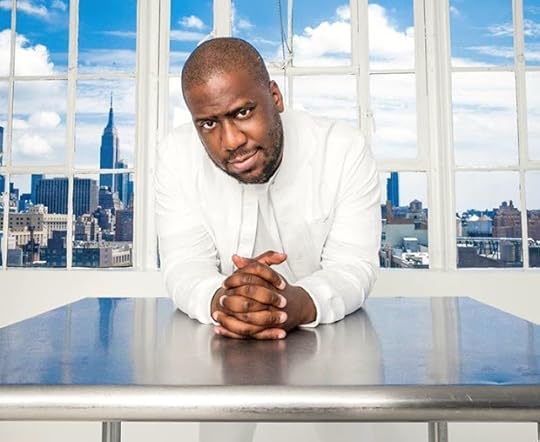 'In a moment for African-American representation in television and film, it also appears to be a moment for improvisational jazz. Grammy award winning pianist Robert Glasper, the ear behind the Robert Glasper Experiment, is feeling his way through it, not knowing how his songs will begin or end. In his latest album, ArtScience, out this fall, Glasper has compiled what he calls a "musical mutt." It's the product of a quick two weeks he spent camped out in a studio with his bandmates.' -- WNYC
'In a moment for African-American representation in television and film, it also appears to be a moment for improvisational jazz. Grammy award winning pianist Robert Glasper, the ear behind the Robert Glasper Experiment, is feeling his way through it, not knowing how his songs will begin or end. In his latest album, ArtScience, out this fall, Glasper has compiled what he calls a "musical mutt." It's the product of a quick two weeks he spent camped out in a studio with his bandmates.' -- WNYC
Published on December 10, 2016 06:56
The Evolution of Leslie Uggams, From 'Roots' to Empire'
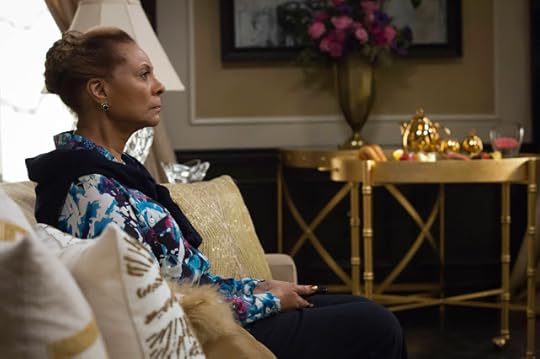 'Actress and singer
Leslie Uggams
has been in show business since the age of six, when she first appeared on TV. Since then, she's moved seamlessly between film, television, and theater. Uggams is a cultural pioneer, winning a Tony award for her Broadway debut in "Hallelujah, Baby!", and becoming the first African-American woman to host her own TV variety show in 1970. Her break-through role came in 1977 when she played the role of "Kizzy Reynolds" in the television miniseries Roots in a role she defines as life-changing. Today, Uggams remains popular with a new generation for her role as foul-mouthed Blind Al in the box office smash movie
Deadpool
, and her recurring role as Lucious Lyon's bi-polar mother Leah Walker on the hip-hop television drama
Empire
.' -- +WNYC
'Actress and singer
Leslie Uggams
has been in show business since the age of six, when she first appeared on TV. Since then, she's moved seamlessly between film, television, and theater. Uggams is a cultural pioneer, winning a Tony award for her Broadway debut in "Hallelujah, Baby!", and becoming the first African-American woman to host her own TV variety show in 1970. Her break-through role came in 1977 when she played the role of "Kizzy Reynolds" in the television miniseries Roots in a role she defines as life-changing. Today, Uggams remains popular with a new generation for her role as foul-mouthed Blind Al in the box office smash movie
Deadpool
, and her recurring role as Lucious Lyon's bi-polar mother Leah Walker on the hip-hop television drama
Empire
.' -- +WNYC
Published on December 10, 2016 06:47
How I Got Over: Vision and Justice in Racialized America with Carrie Mae Weems + LaToya Ruby Frazier + Sarah Lewis
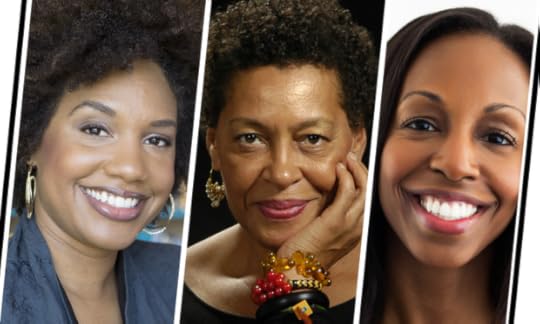 'For all the pain, anxiety and devastation caused by the widely circulated video footage of black lives being literally extinguished, we are also bearing witness to a pronounced moment of black cultural ascension. Photographers LaToya Ruby Frazier and Carrie Mae Weems and Harvard University art history professor Sarah Lewis discuss celebrating and advancing visual literacy around race, and what it feels like to be American and black during this dichotomous time of triumph and tragedy. Hosted by Rebecca Carroll, WNYC producer for special projects on race.' -- +The Greene Space at WNYC & WQXR
'For all the pain, anxiety and devastation caused by the widely circulated video footage of black lives being literally extinguished, we are also bearing witness to a pronounced moment of black cultural ascension. Photographers LaToya Ruby Frazier and Carrie Mae Weems and Harvard University art history professor Sarah Lewis discuss celebrating and advancing visual literacy around race, and what it feels like to be American and black during this dichotomous time of triumph and tragedy. Hosted by Rebecca Carroll, WNYC producer for special projects on race.' -- +The Greene Space at WNYC & WQXR
Published on December 10, 2016 06:40
December 9, 2016
Theaster Gates + Richard J. Powell + Carrie Mae Weems in Conversation
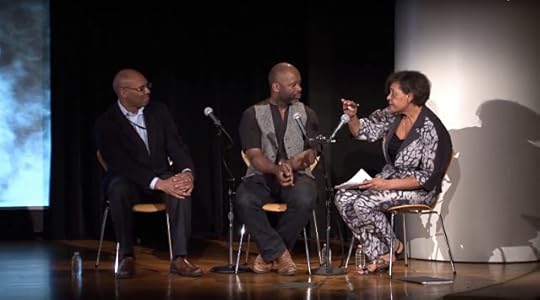 'Theaster Gates speaks with Carrie Mae Weems and Richard J. Powell about community, artistic practice, and the politics of urban development.' -- +Guggenheim Museum
'Theaster Gates speaks with Carrie Mae Weems and Richard J. Powell about community, artistic practice, and the politics of urban development.' -- +Guggenheim Museum
Published on December 09, 2016 18:38
How the Trump Election and Social Media Externalized America’s Dormant Hate
 'If hate is a virus, the U.S. has got it bad. Oliver Luckett presents a fascinating perspective on how the 2016 election divided America, how social media mimics biology, and how the U.S. can start to rebuild. Luckett's book is
The Social Organism: A Radical Understanding of Social Media to Transform Your Business and Life
.
'If hate is a virus, the U.S. has got it bad. Oliver Luckett presents a fascinating perspective on how the 2016 election divided America, how social media mimics biology, and how the U.S. can start to rebuild. Luckett's book is
The Social Organism: A Radical Understanding of Social Media to Transform Your Business and Life
.
Published on December 09, 2016 18:31
Music + Visuals: De La Soul feat Estelle + Pete Rock – “Memories of ...(US)”
 Music + Visuals for "Memory of… (US)" featuring Estelle & Pete Rock from De La Soul's 2016 Album and the Anonymous Nobody.
Music + Visuals for "Memory of… (US)" featuring Estelle & Pete Rock from De La Soul's 2016 Album and the Anonymous Nobody.
Published on December 09, 2016 18:09
#TheSpin: A Conversation Between Gwendolyn Zoharah Simmons + Aishah Shahidah Simmons
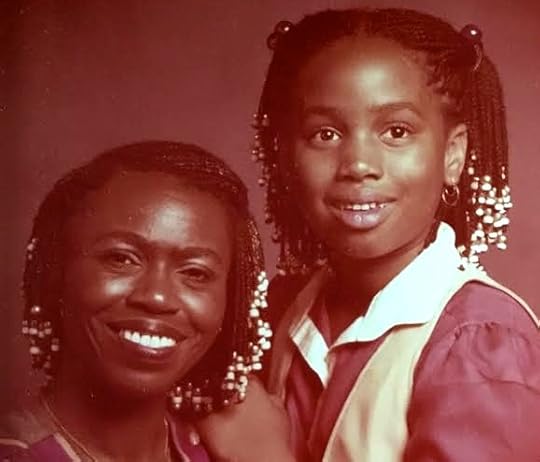 On this episode of #TheSpin hosted by Esther Armah, she is joined by filmmaker Aishah Shahidah Simmons and her mother, scholar Dr. Gwendolyn Zoharah Simmons in a discussion about the impact of childhood sexual violence.
On this episode of #TheSpin hosted by Esther Armah, she is joined by filmmaker Aishah Shahidah Simmons and her mother, scholar Dr. Gwendolyn Zoharah Simmons in a discussion about the impact of childhood sexual violence.
Published on December 09, 2016 17:19
Donald Byrd -- "Slow Drag" (1968)
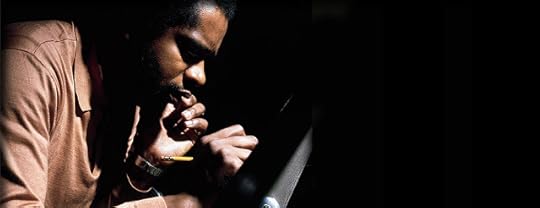 Released in December of 1968, "Slow Drag" features Donald Byrd - trumpet + Sonny Red - alto sax + Cedar Walton - piano + Walter Booker - bass + Billy Higgins - drums & vocals.
Released in December of 1968, "Slow Drag" features Donald Byrd - trumpet + Sonny Red - alto sax + Cedar Walton - piano + Walter Booker - bass + Billy Higgins - drums & vocals.
Published on December 09, 2016 16:47
December 8, 2016
Spaceships + Crowns and the Return of Black America by Mark Anthony Neal
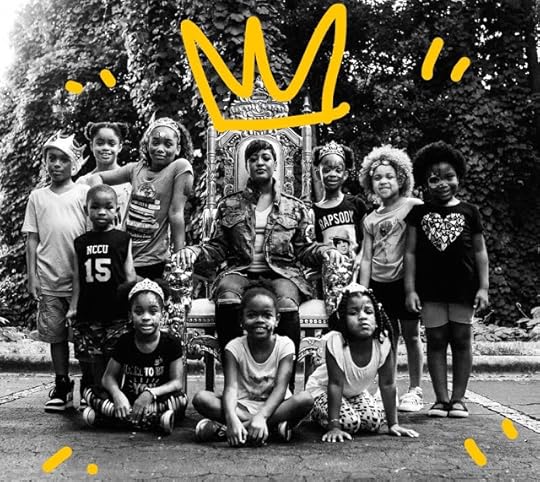 Spaceships + Crowns and the Return of Black Americaby Mark Anthony Neal | @NewBlackMan | NewBlackMan (in Exile)
Spaceships + Crowns and the Return of Black Americaby Mark Anthony Neal | @NewBlackMan | NewBlackMan (in Exile)If we are to index the impulses of Marcus Garvey’s Black Star Line, Sun Ra’s Space is the Place, Parliament’s Mothership Connection, Janelle Monae’s Metropolis, the Nation of Islam’s Space Wheel (with a nod to Ezekiel) or say, the Derrick Bell’s short story “Space Traders,” what we find is less a partial syllabus for a distinct Black Nationalist inspired Afrofuturism, but the basic pragmatism of Black Aspiration, uh pardon me “Afro-Aspiration.” As the barber of Bell’s doppelgaenger Professor Golightly suggest in the screenplay for “The Space Traders,” shit can’t be no worse, wherever they trying to send us -- and in the case of Cindi Mayweather, whatever we become -- so why not be proactive and claim otherworlds for ourselves.
The title of A Tribe Called Quest’s first studio recording in 18 years, We Got It from Here... Thank You 4 Your Service is more prescient than timely, despite the recording’s availability only days after the end of America’s Black Father as President experiment -- both a dismissal of Mother as President and the resuscitation of the Old White Patriarch.
You might file that title under what we’ve always understood, the knowledge produced between sociologist Sidney Wilhelm’s underground classic Who Needs the Negro? and Ava DuVernay’s The 13th (inspired by Michelle Alexander’s The New Jim Crow), or what happens when a people who were decided analog, yet futuristic, find themselves no longer of use in the digital era, except as digital ephemera -- putting you out to pasture or is that a cloud? -- and that pension plan might be a cot and 3 squares at a private facility across from a performing arts center.
In a world in which you can never be sure as to whether cultural appropriation is legitimate appreciation or outright theft, A Tribe Called Quest offers another possibility: cultural irrelevancy. If we are to take the late Casey Kasem at his word -- again from the screenplay for Space Traders -- or to consider the absolute absence of anyone of color in the initial production of Hanna Barbera’s The Jetsons (as in a future without Black folk), if Black folk are no longer of value culturally to the United States -- and have long been such in the case of free affordable labor (as opposed to incarcerated affordable labor -- and do they count that shit in labor statistics?) -- (which is how Wilhelm begins his conversation more than 40 years ago), what’s a Black folk to do?
A Tribe called Quest answers that query two songs into We Got It from Here... where “Space Program’s” hook “There ain’t a space program for niggas, Yeah, you stuck here, nigga” is counterbalanced with “We the People’s” chorus “All you Black folks, you must go / All you Mexicans, you must go / And all you poor folks, you must go / Muslims and gays, boy, we hate your ways / So all you bad folks, you must go.” Hence the conundrum of contemporary Blackness, where Eduardo Bonilla-Silva might suggest that a whole bunch of folk became “culturally” Black in the early morning of November 9, 2016 or perhaps more apropos “Native,” if we are to consider the assault on sovereignty (again, and again) at Standing Rock. If they willing to take your land, they for damn sure gonna take your culture.
But Blackness is, always has been, about the Black imaginary -- Fred Moten’s fugitivity; Sylviane Diouf talking a Blackness hiding in plain sight; Dispossessed Lives animated in the archive -- so that those appeals to kings and queens of the “Africa of the Black History Month calendar” (Sekou Sundiata, still dreaming us) is not simply empty rhetoric produced to make some Black folk feel Blacker than thou; it represents a standing of ground.
The Basquiat-inspired Crown that accompanies the visuals for Rapsody’s Crown (EP) release -- the first in collaboration with 9th Wonder’s Jamla Records and Roc Nation -- is such a standing of ground. Sometimes your Afrofuturistic dreams are the here and now, and they resonate in the simplicity of just making sure that those block boys (“block boys, Block Boys!” she hails) walk cap and gowned across somebody’s stage instead of casketed; “that’s responsibility” she says, like the older cousin you had a crush on when you were nine; ain’t enough of them older cousins in Hip-Hop these days. Them Block Boys might not ever be nobody’s older cousin, cause it ain’t ever just been about a parent (or two or three) in the home; somebody got to walk you to the bodega before mama get home from work.
The Cam Be produced visuals for the title track recalls an earlier moment: Jaheim’s “Fabulous” and Nas’s “I Know I Can” when we were all clear about nursery rhymes-to-prison pipelines, and the music offered rhetorical “Crowns” to mattress flipping denizens, who couldn’t even imagine Gabrielle Douglas and Simone Biles (or that other Simone who showed that “Water Get No Enemy”); After eight years of not being so sure -- where 8-year-old Black girls get shot to death by cops while watching television in their own residence and 12-year old Black boys get shot to death by cops while playing in the park, and with barely a mumbling word from Him (“Him in the White House” as Bernie Mac might have said) -- we are back on surer ground.
When little Black girl Dabs, she ain’t got to dream; Cameron did that. We been done crowdsourced gestures and what the sociologists might refer to as “vernacular” culture, to get our kids to step hard into the Light. That we have hand-held portals to the Light only makes this moment more compelling. As Krista Thompson writes “public visibility through visual media -- through one’s appearance on-screen -- has become a sought-after was of asserting one’s right as a citizen.” (Shine: The Visual Economy of Light in African Diasporic Aesthetic Practice, 115).
Truth is that Black America always been a crowdsourced concept, like the shit we used to learn in Church, which was really the ethos of a people surviving a conceptual wilderness: “make a way out of no way.” Niggas catch hell no matter what tongue they call home; Why the “again” in the title of Common’s Black America Again is most definitely a redundancy or rather the ancestral commitment to repetition as Sir Gates reminded us nearly 30 years ago. Blackness might actually be the Monkey on your back, if that Monkey was once named Elegbara; and indeed Common summons him (her? Which makes perfect sense) all analog like in the Bradford Young directed short film for Black America Again.
Common picks of the needle and goes old school, before the park benches, before those project hallways (cause we loved the echo chamber), before them doo-wopped street corners, before them porches, and while it might be modern day Charm City, it was for sure Congo Square (myth of not) and Common ain’t sound better ever -- except while sipping on the chocolate water awhile back -- alongside nothing but the but skin against skins (and making some music with your mouth), and it's like Baraka said before that first transition, “the spirits do not descend without music.”
Young’s visuals draw deep from the Archives of Blackness -- NOLA, The Caribbean, The American South, West Africa -- demanding a literal crowdsourcing, as Jessica Marie Johnson writes: “I never say this–never, ever, ever–but read the comments beneath the video. There, black people are curating the symbols and cues in the video.”
Common might can be somebody’s young uncle (as opposed to that cousin), but uncle Rashid fucks with this shit as he supposed to -- analog in a digital world a lover once said or the digital analog, as in analog produced for the digital; ain’t nobody been to the record store for this film, is my point and you ain’t got to pay that Tidal subscription (though please do, cause sometimes the Blackstar Line need that good, good Google fiber) to get that HD. And even Common been checking them space programs: “You put a nigga in Star Wars, maybe you need two / And then, maybe then we'll believe you / See black people in the future.”
The transcendent moment comes two-thirds in -- Common’s voice just background banter -- three grown Black women, the mothers and aunties of that older cousin, chalk on the ground that’s neither child’s play or the sketched remains of the dead, but a cosmogram -- an ancient Black technology proving that not all technology need be digital. The conjured Ring Shout that next appears right at that axis features music that is itself some of that dark science that you make-a-way-out-of-no-way with,the lone piano with handclaps, tambourines and the intersection of death is transformed into The Old Landmark which takes flight “swing down, sweet chariot stomping, let me ride” in a more Jacksonian rendering (as in Mahalia) than Clintonesque (as in George). This is a resurrection.
By the time Mr. Steveland Morris appears, singing the official hook, what you witness are the faces of Black America, who have traveled from here to there, but for sure ain’t going nowhere; still got some technologies up in those bootstraps.
+++
Mark Anthony Neal been conjuring analog for a digital world for a minute; Check him at @NewBlackMan + @LeftofBlack + BookerBBBrown on the ‘Gram + and the homebase at NewBlackMan (in Exile).
Published on December 08, 2016 08:52
December 7, 2016
Soaring Like a Bird by Charles Bane, Jr.
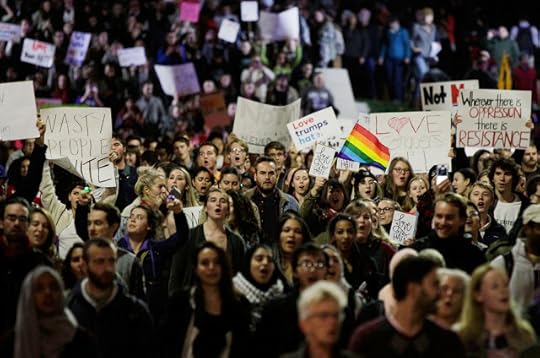 Soaring Like a Birdby Charles Bane, Jr. | special to NewBlackMan (in Exile)
Soaring Like a Birdby Charles Bane, Jr. | special to NewBlackMan (in Exile)Forces among the American people are gathering like merging clouds to resist the presidency of Donald Trump, and their objects are large: to prevent a downslide into everything that is cancerous to a democracy, to carry goodness uphill and store up time and small achievements that will grow greater when Trump no longer holds levers of awesome and frightening power.
Trump is not a deep reader, and never an activist. Like all men of brutish will, he is ultimately an enigma and it's likely his thin skin is going to build to tragedy. History is already beginning to sketch him out and tweets can't stop its pen.
What I'm writing comes from experience. Schooled by Saul Alinsky, I know that victory comes to the activist in disappointing sizes that seem—at first—unacceptable and only later are a comfort, like a memento stored under socks in a drawer.
This is what I want to add, unconventionally, to all the words that will pour from the marginalized during the next four years: study philosophy.
This is not eccentricity. The civil rights movement I was part of produced, at moments of threat, what icon Andrew Young called " freedom high": a feeling of kinship with a cause so intense that the struggle became transcendent and all sense of danger passed ( In the 1990's I was under a death threat from local drug dealers who did not want my initiative of a drug court to succeed, funneling young Black males in our county who were first-time offenders away from prison and into community service, that would disrupt their business and way of life. We were living in a small house in West Palm Beach, Florida and when the newspaper was delivered each morning and thrown against the side of the house, my lovely wife would jump, fearful of a gunshot. I never experienced more serenity).
Over the next four years, protesters will organize, march, confront and face arrest. In place of freedom high, they of permanent resistance need cloud--level height from which to soar, as solace, reward and perspective that is personal.
No matter what you may have been taught, philosophy is the marker line between the pack and you as a thinking soul. It was philosophy that replaced myth with a deeper quest for truth. When the police cars vanish, what is your purpose? What acts between yourself and others will foster the connection you crave and give you peace, now and when the day is won?
Read the philosophers, each one and you will never feel—at your most oppressed—an exile.
+++
Charles Bane, Jr. is the American author of three collections of poetry including the recent The Ends Of The Earth: Collected Poems (Transcendent Zero Press, 2015) and The Ascent Of Feminist Poetry, as well as I Meet Geronimo And Other Stories (Avignon Press, 2015) and Three Seasons: Writing Donald Hall (Collection of the Houghton Library, Harvard University). Bane created and contributes to The Meaning Of Poetry Series for The Gutenberg Project.http://charlesbanejr.co
Published on December 07, 2016 06:35
Mark Anthony Neal's Blog
- Mark Anthony Neal's profile
- 30 followers
Mark Anthony Neal isn't a Goodreads Author
(yet),
but they
do have a blog,
so here are some recent posts imported from
their feed.



